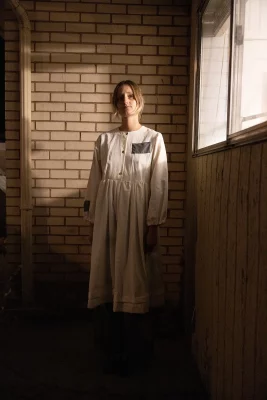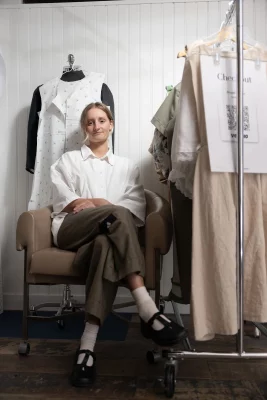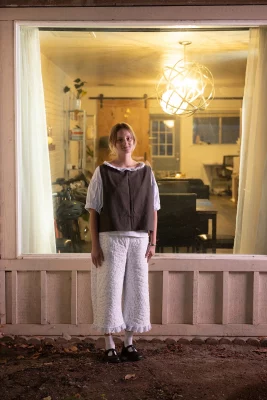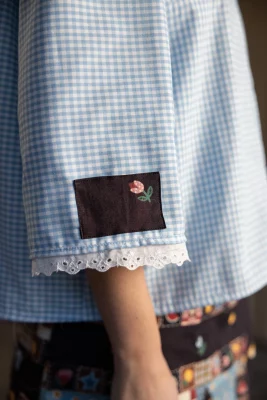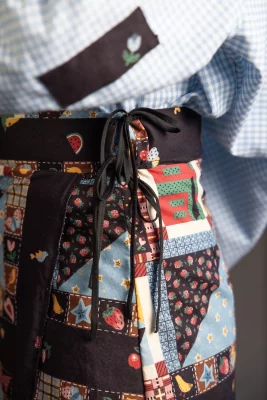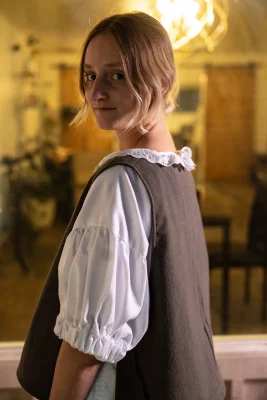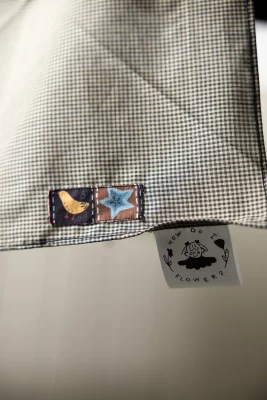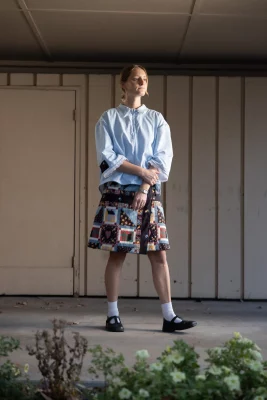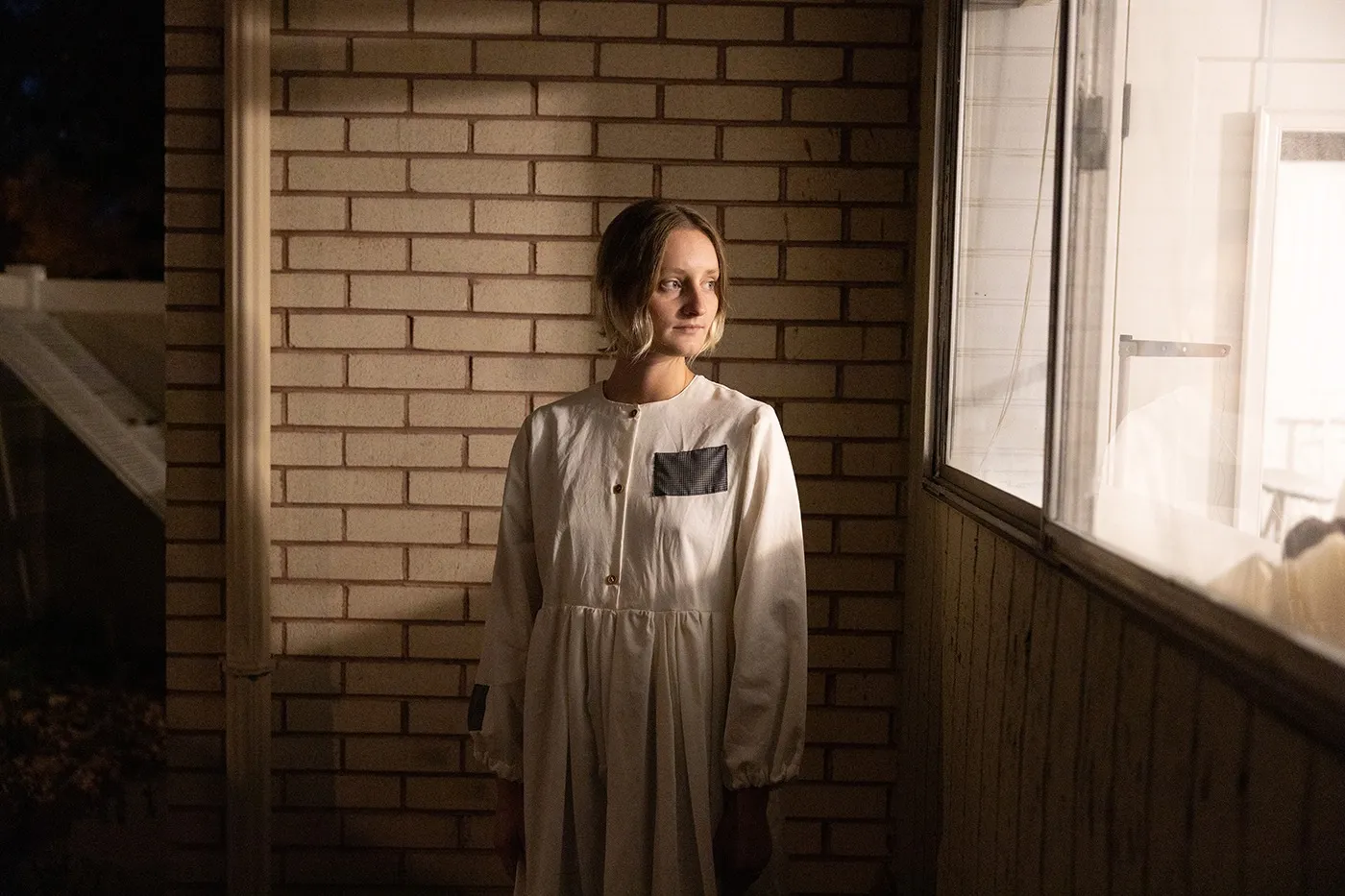
SLUG Style: Abigail Rue Jenson
Fashion
Abigail Rue Jenson uses sewing and textiles as a means of personal healing and growth with her brand, How Do I Flower? Her latest collection, “Patched Up,” shows how clothing can be an expression of vulnerability. See her work on Instagram @abigailruej.
Every month, SLUG Style features a distinct member of the community and asks them why they do what they do. Exploring more than just clothing, SLUG Style is an attempt to feature the people who give Salt Lake City flavor through personality and panache.
Tell us about the “Patched Up” collection you’ve put together. How did this collection come about, and what is its importance to you?
In April my pregnancy test was positive. I was beyond excited to be a mom and start a family with my husband. My body went through all the typical pregnancy symptoms. I felt nauseous 24/7, I pulled to the side of the road and barfed in the street, sleeping was my new hobby and the only thing on my mind was my growing baby. Even though pregnancy had brought some discomforts—I was obsessed. At 13 weeks my body expelled the pregnancy.
“Patched Up” is inspired by the idea of wearing hurt and healing on the outside. Often we hide our scars and imperfections. We post our best hair days, share milestones, celebrate achievements. At the same time we push our anxiety attacks and breakups further under the bed or in that one drawer in the house that holds all the other broken or misplaced items.
When I found out that miscarriage is actually really common, I could not help but feel I should share my experience. One in four women will miscarry during their childbearing years. That’s a LOT!!! If miscarriage is so common, why did I feel like I was the only one in the world experiencing it? I think in part it is because of unwritten social rules that tell us to share the picture-perfect moments and avoid sharing death, hurt or suffering because it is inappropriate or people don’t want to hear it.
The goal of “Patched Up” is not only to encourage people to wear hurt on their sleeves but to create a community where people allow others to heal aloud—to accept, love, and be there for others especially when their struggles manifest themselves on the outside.
In my experience, healing does not take place under the bed or in a dark drawer. Healing is fostered in the light, among people who are not afraid of transparency and the ugly truths of life.
Thus I came out with the collection “Patched Up” healing allowed/aloud.
How would you describe your relationship to clothing?
My relationship to clothing in general is not very exciting … I’ve never been crazy about looking the most stylish, and I hate shopping for clothes. I enjoy clothing that is functional, of good quality, and simple…
My relationship to making clothing, though, is where I have seen clothing in a new light—a medium to create and express my artistic abilities. I have gone through phases of expressing my artistic abilities through a variety of mediums: video, clay, yarn, magazines, pen, etc. For the past three years until now, clothing just happens to be the medium I am using.
What are your stylistic influences? This could be a band, decade, fictional character—anything.
Children … and my childhood. I love looking at the photos of my sister and me as kids. The clothing my mom dressed us in was so cute and simple. (I am the type of adult you see shopping in the kids section of stores for themselves because the kids section always has better colors and designs!) A lot of the things I make are inspired by an outfit I wore as a child. For instance, I decided to create a bloomers collection in 2022 based on bloomers I wore as a kid. I remember the bloomers I wore to church under my dresses having elastic wastes, eyelet trim on the hems and being thin and airy. I decided to make bloomers mimicking that look and even played around with the idea of wearing bloomers as pants with the quilted bloomers I made.
Other influences include The Sound of Music and Japan … I love how common it is for people to layer clothing in Japan—one thing that I have incorporated in some of my collections. I also love the design details (pleats, darts, necklines, etc.) and earth tones in the clothing worn in The Sound of Music.
Tell us about How Do I Flower?
To ‘flower’ means ‘to be in or reach an optimum stage of development; to develop fully and richly.’ The mission behind How Do I Flower? is not only to help individuals flower but also to keep our mother earth flowering. This is why the products sold are hand sewn directly by me, as well as made from recycled fabrics, scraps, quilts, bedsheets, or other second hand materials I curate to reduce waste.
How Do I Flower? has served as a creative play grounds of sorts for me to learn how to start my own brand, establish values and continually improve my products and vision. It has been nice to have a safe and low risk place to do a lot of trial runs for different pieces I have made as well as refine my marketing strategies and avenues.
With all of the lessons I have learned from running How Do I Flower?, I hope to transition to a more-refined company I will be releasing in the future. Stay tuned!
How did you get into designing clothes? What attracted you to this practice?
When I was dating my husband back in 2019, we decided we wanted to sew matching pajama pants, so we busted out his mom’s sewing machine and got to work! They were a wreck, and we threw them away … but that’s what initially sparked my interest in learning how to sew.
After getting married a few years later, my husband and I both continued to sew together, and I took classes at BYU that gave me the skills I needed to be able to follow commercial sewing patterns and eventually create my own.
What are your interests or hobbies? What is the hobby or interest that you have that no one would realize to ask you about?
I am a high school teacher. Most of my peers know me by the content I put on social media about my brand and are surprised when they find out I actually spend most of my waking hours in the classroom with high school students. I teach child development classes where we get to discuss all sorts of fun stuff like reproduction, pregnancy, child psychology and well-being, etc. I also teach sewing and textiles classes and LOVE celebrating with students when they finish a garment and take pride in their new skill!
Are you always “on” or would someone see you at the grocery store, for example, with less elements of your style?
Like most people, I have a variety of different looks I wear … professional, comfortable, minimalistic, athletic, etc. I have been pretty consistent with my overall style most of my life … I could show pictures of me as a kid, always wearing loose-fitting clothing, snug necklines (I loved collars), my hair pulled behind my ears with some sneakers … usually wearing neutral colors- browns, whites and maybe a colorful accent every now and again. Very boy-ish.
You can still find me wearing those things today. I wear boxy tops, loose bottoms and continue to wear the same pair of sneakers for years until it’s time to replace them with my next ones.
To be clear though, my personal style is not the same as the style and look of the clothing I make and sell … The clothing from my collections are, in a way, experiments and works of art that I find beautiful, but they are not always what I would personally wear on a day-to-day basis and do not represent my personal style. There is some overlap with the things I create and the things I wear day to day like the boxiness of my designs and accessories I wear like bandanas and ribbons.
If you had to describe yourself in three words, what would those be?
Life-long learner.
A lot of the clothing offered in your shop errs toward more traditional clothing styles such as smocks and bloomers. What about this aesthetic speaks to you?
Growing up I was always in awe at the way my mom could make so many different looks using the same few pieces of clothes she had in her closet. The designs in my shop tend to be simple, with some detail that creates an area of interest such as trims, pockets, collars, etc. My goal is to create clothing that is versatile. This speaks to my values to reduce waste by consuming less.
For instance, you’ll find among my collections smocks that have wide necklines, ties on the side that allow the wearer to take it on and off easily. This design offers the wearer options and versatility in its use. You can wear the smock as a single piece, wear pants underneath, mix with a sweater over it or have a shirt underneath—all creating totally different looks. I believe that clothing should be simple. We don’t need 50 items of clothing in our closets … just a few pieces can go a long way.
How has your personal style evolved over time?
I feel like I answered this mostly in one of the previous questions… but to add on, my style includes clothing that is of better quality. It took until I was in my 20s to realize that not all clothing is created equally. The materials and makers really do make a difference. I really like wearing clothing from natural fibers such as cotton and linen. I also pay more attention to details in clothing … For instance I never used to notice pleats, button closures or seam finishes. After sewing clothing though and learning what makes a garment last a long time, my style has shifted in ways most would never notice … I just wear things that are a little better quality and have little details on them that make them worth more in my eyes.
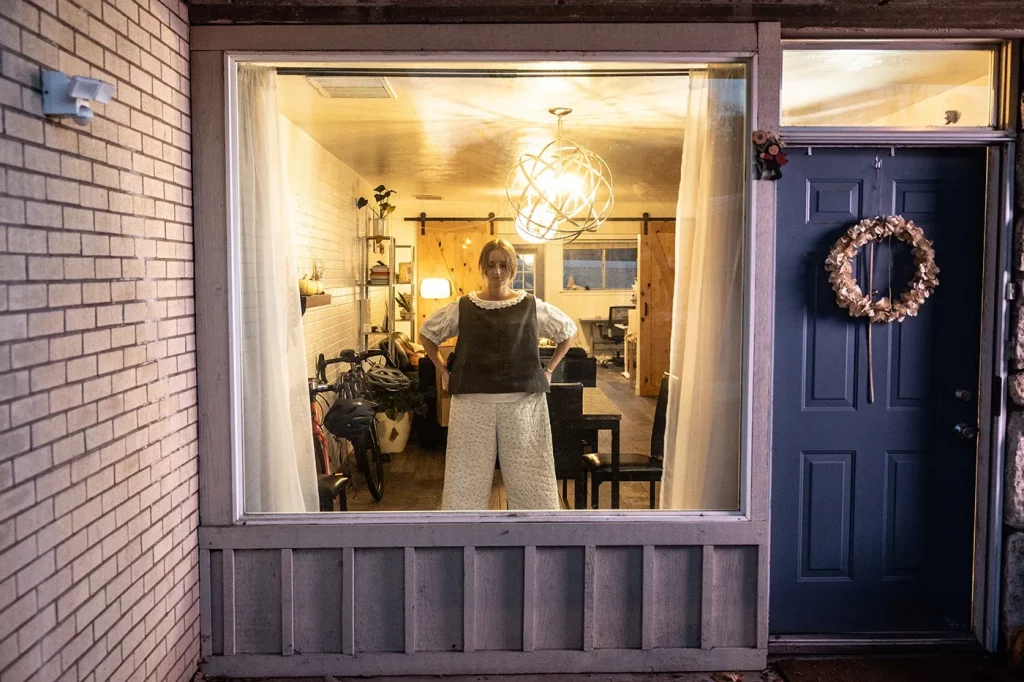
Read more SLUG Style features:
SLUG Style: Daddy Long Legs
SLUG Style: Abigail Peña
